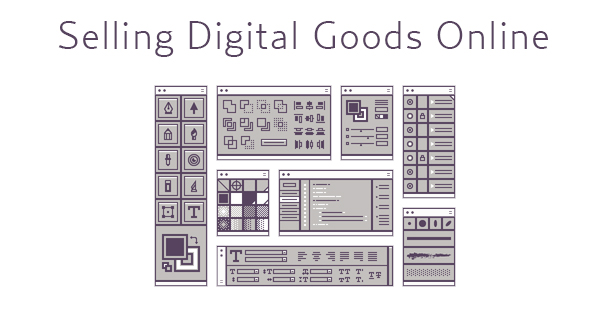Online sales have busters and as such when planning selling products online, one should look out for the best solutions that will boost sales. Various tools can be deployed in selling products online, but one needs to check the features to know the one that will soothe your products.

Selling Products Online | The Best Ways to Sell Digital Goods -Tools &Tricks
- Let us look at the various platforms for selling products online and from their features know the best. Easy Digital Downloads (EDD) has been adjudged the best tool for people interested in selling digital goods online. This is followed closely by SendOwl and Gumroad, both of which stand strong for selling products online, particularly in the digital goods sector.
- This decision comes from the fact that EDD remains free (besides any extensions and payment provider fees,) you can integrate it with just about any site, the reports deliver spot-on metrics for evaluating the health of your store, and the user interface makes things simple for both you and the user (products show up clean on your site, and the customer receives an instant email with a link after they purchase your digital product).
- Runner-up SendOwl opens up all sorts of possibilities in terms of selling digital goods on any CMS or website building platform. It costs more than EDD, but the pricing plans depend entirely on the number of products on your site and the amount of download storage space. Therefore, you’re not going to ever spend more than you need to.
- SendOwl is one of the easiest ways to sell your digital products. It’s primarily designed for selling digital items, so they give you simple buttons to put anywhere and you can upload a wide variety of product files. The no-popup, no-installation shopping cart appears tidy and minimal. You also get some powerful tools such as discount management, shipping and tax calculations, simple payment processors, variable product options and more.
- As for why it’s in second place, the interface for EDD beats out that of SendOwl, and EDD has a wonderful extension library. Although SendOwl has a massive set of built-in features, you’re stuck with whatever they give you. Therefore, minimal integrations. Furthermore, EDD is free (without any extensions).
- Gumroad – Although the checkout looks beautiful and the storage stands strong, Gumroad only offers PayPal for accepting credit cards.
- EDD has the best features, cleanest frontend interface, an onslaught of cool features and just about any type of business can use it for selling digital content.
- It’s also prudent to take a look at the pricing, which serves as another reason for our choice of EDD. This is the way I see it: EDD can be downloaded for free, but webmasters often end up spending money on the add-ons, many of which are pretty much required for a complete eCommerce store.
- For example, the Stripe Payment Gateway is $49 and MailChimp goes for $29. Overall, you’re not required to spend money on the basic selling of digital goods. Most simple stores will only end up paying for hosting and installing both WordPress and EDD for free. But keep in mind that additional costs may loom depending on how advanced you would like to make your site.
- The ability to integrate with any website – EDD has one of the most intuitive interfaces, especially when it comes to installing on your website. One of the primary reasons you might skip EDD is because it only integrates with WordPress. For many people, this is a good thing (WordPress is pretty easy to learn, and many people already use it). But others may not want to go through this training, or their current site may not be located on WordPress.
- A store for add-ons or extensions – EDD offers an impressive store, but you’ll have to pay for the advanced tools. That said, you gain access to options for subscriptions, frontend submissions, payment gateways, bookings, reviews, commissions and more.
- Advanced user capabilities (wishlists, saving a cart, making a profile) – Both user and guest checkouts come along with EDD, and users can save their carts while shopping. They can also make simple profiles for saving their carts and coming back later. Overall, the profiles are basic, with nothing too confusing for the user.
- EDD even has a module for specifying a minimum required cart total for a discount code to work. For example, you might offer a little discount after someone puts $100 worth of digital downloads in their cart.
SendOwl works on the majority of websites, so you can either have an existing site or create a new one. For example, you might want to implement it on a WordPress or Shopify site. It’s mainly about installing a bit of code, so you shouldn’t have problems with most content management systems or eCommerce platforms. - A store for add-ons or extensions – SendOwl lacks an app store, but it seems like the company tries to include most of the needed features in the actual platform.
- Advanced user capabilities (wishlists, saving a cart, making a profile) – Along with a beautiful responsive checkout, SendOwl offers options for saving carts and for customers to come back to check out. Sell Subscriptions and Memberships – Along with impressive subscriptions and membership, SendOwl has drip functionality to share some of your content for free and giving a little bit more as people pay or progress through a program.